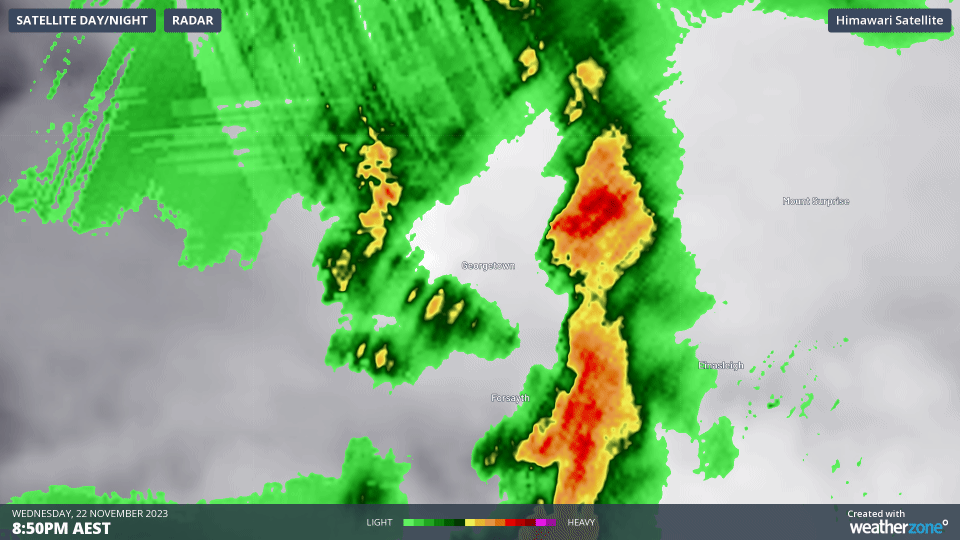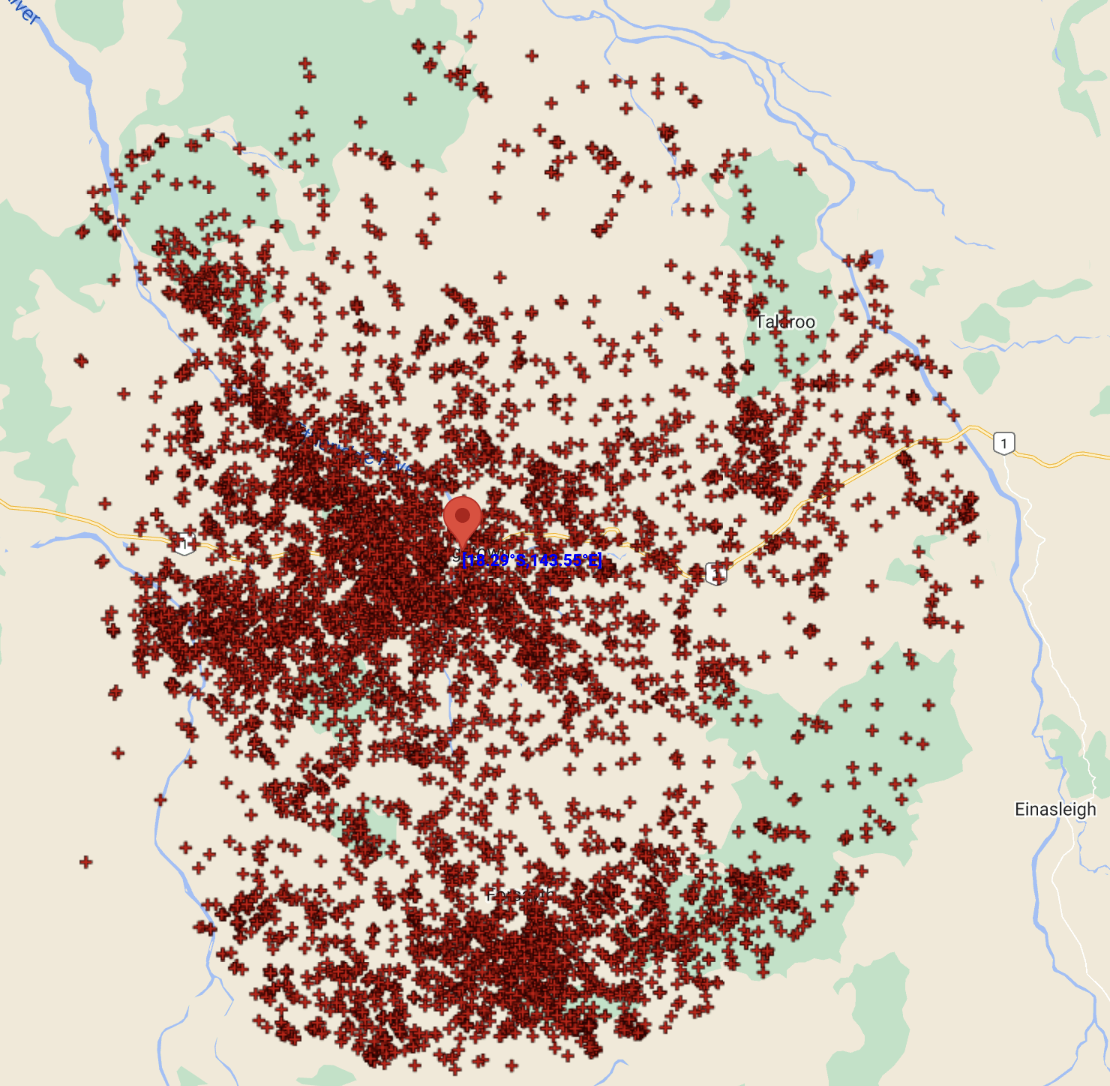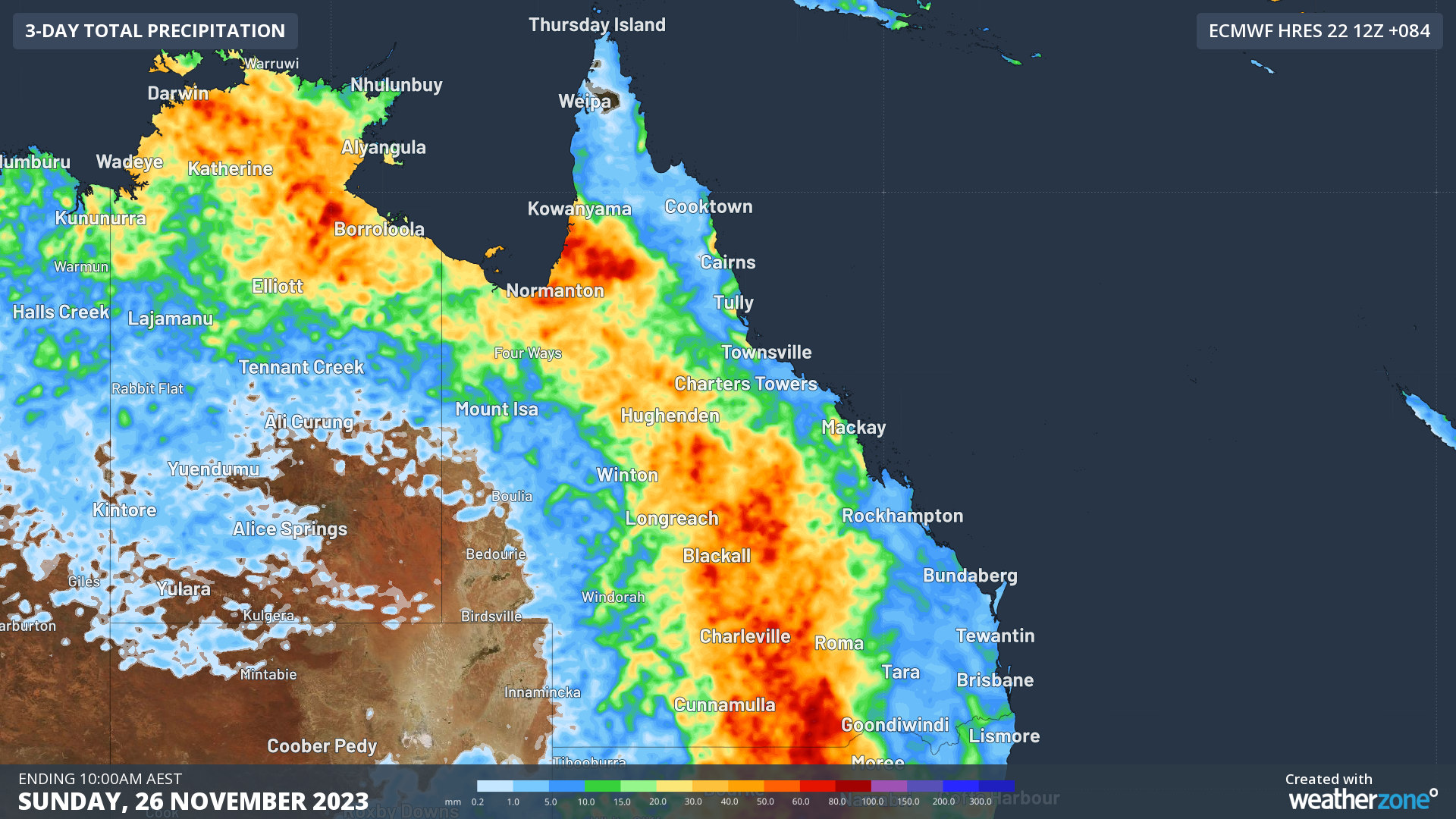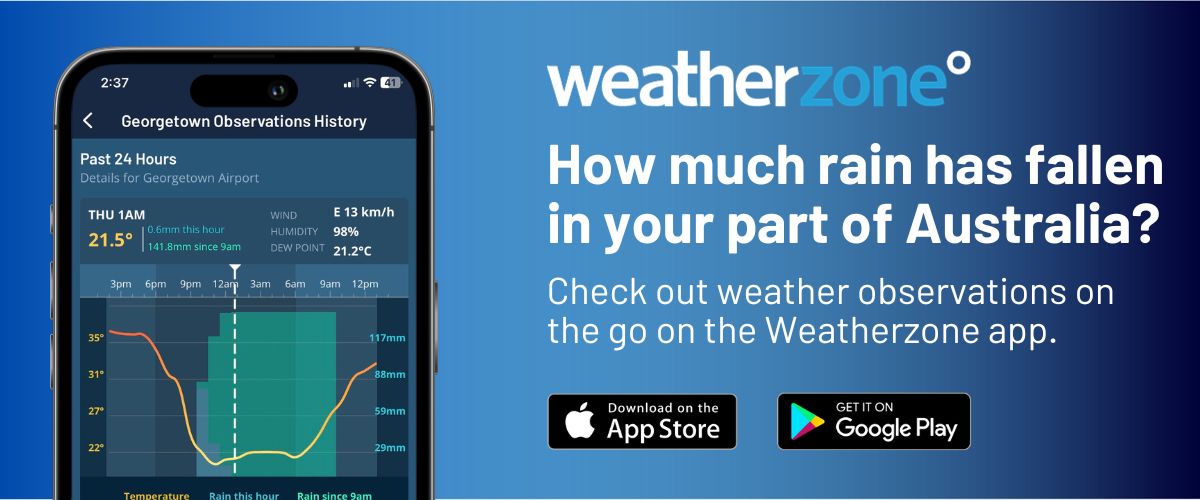Nearly 100mm in an hour in Queensland
Nearly 100mm in one hour, including 36mm in 10 minutes, has poured down on the small northern Queensland town of Georgetown overnight with an intense thunderstorm.
On Wednesday evening, thunderstorms were flashing over much of Qld, and thunderstorms only picked up in the north when the sun went down. A particularly active storm cluster moved over the town from about 9pm, lasting to around midnight. You can see the radar of this storm below.

A colossal deluge of 35.8mm in 10 minutes, and 95.4mm in one hour rained over Georgetown Airport as the system double-backed on itself. This likely occurred due to the meeting of seabreezes from the Gulf of Carpentaria and Cairns coast, combining with the troughs well established over the region.
In just a 50km radius of Georgetown, 37,000 lightning strikes were recorded, with just under 7,000 striking the ground. Statewide, Queensland saw 1.03 million lightning strikes in the 24 hours to 6am Thursday.

Image: Nearly 7,000 cloud-to-ground lightning strikes recorded within 50km of Georgetown on Wednesday night by the Weatherzone Total Lightning Network.
This intense deluge added up to a mammoth 141.8mm, making it Georgetown's wettest November day in 151 years of records. It was also its wettest day since ex-Tropical Cyclone Nora impacted the region in March 2018. Rainfall this intense is rare, even for a location in northern Australia that can see tropical cyclones. Over one, two, and three-hour time scales, this deluge is estimated to be between a 1 in 100 year and 1 in 200 year chance to occur in any given year for the area.
READ MORE: What do annual rainfall chances mean?
The trough responsible for this deluge is still lingering around the area and looks to stick around into next week. Over the next 3 days, falls of 20-50mm are expected over much of the central corridor through Qld, with heavier falls likely with some thunderstorms.

Whatever the weather is at your place, you can keep up with the latest forecast, lightning alerts and warnings at Weatherzone.com.au or our App.